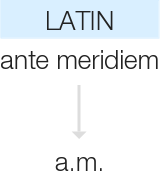(AM) an acronym for Amplitude Modulation is a method used in electronic communications, most notoriously for transmitting information via a radio carrier wave frequency in Hz or hertz. AM works by varying the amplitude of the carrier wave in accordance with the information being sent; this imposes an additional signal onto the already-existing carrier wave. The original signal is known as the “message” or “modulating” signal, while the resulting combined signal is called an “envelope.”
The difference between AM and other forms of transmission, such as Frequency Modulation (FM) or Phase Modulation (PM), is that it does not require a complex receiver to demodulate the incoming signal. This makes AM particularly well suited for broadcast applications, where large numbers of people need to receive signals simultaneously without specialized equipment. However, one downside to using AM is that it can be more susceptible to interference than other types of modulation; this noise can degrade reception quality and make it difficult to hear faint signals.
Amplitude modulation (AM) is a type of modulation where the amplitude of a carrier wave is varied in accordance with the information signal being transmitted. AM was the first method used to transmit voice signals by radio and is still widely used today for both voice and data communications.
There are two types of AM: double-sideband (DSB) and single-sideband (SSB). DSB is the more common type and is what most people think of when they think of AM radio. In DSB, both sides of the original carrier wave are used to carry the information signal, resulting in a slightly higher power consumption but also allowing for simpler receivers. SSB uses only one sideband, resulting in lower power consumption but requiring more complex receivers.
AM has some advantages over other forms of modulation such as frequency modulation (FM). One advantage is that it can be easily detected using simple equipment such as an antenna and receiver tuned to the carrier frequency. Another advantage is that it’s relatively resistant to interference from things like electrical storms or man-made noise sources like power lines or motors since these tend to produce constant amplitude signals rather than varying ones like an AM signal does.
Overall, amplitude modulation remains one of the most popular methods for transmitting information electronically due largely to its simplicity and reliability. It continues to be widely used in both commercial broadcasting and amateur radio communications alike.


